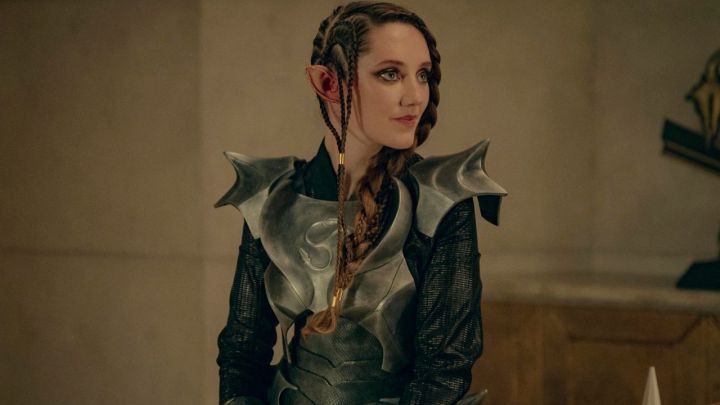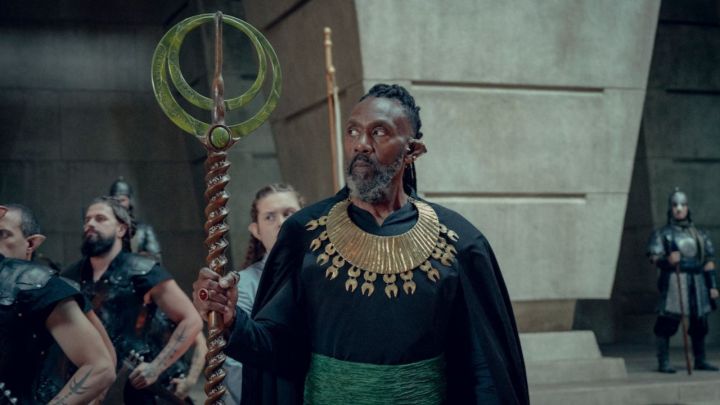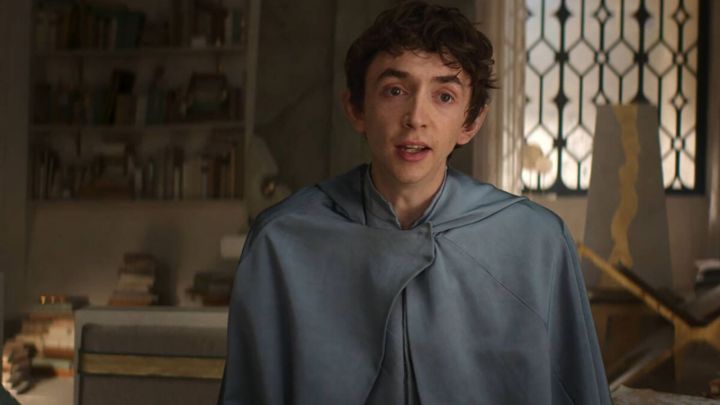
Netflix is investing significant time and resources into developing The Witcher as its next major franchise. The Witcher: Blood Origin, a four-episode limited series that premiered on December 25th, serves as a prequel aimed at answering some of the series’ biggest questions. Following Henry Cavill’s highly publicized exit from The Witcher, the streamer took measures to ensure the franchise’s future, including casting Liam Hemsworth as Cavill’s replacement and continuing to build the series’ expanded universe, of which Blood Origin is a crucial part.
Starring an ensemble led by Sophia Brown and Laurence O’Fuarain, The Witcher: Blood Origin takes place during the Golden Age of elves on the Continent. The limited series tells the story of seven strangers who unite against a despotic and blossoming empire and features the origin story of many prominent aspects in The Witcher‘s lore. Mainly, the series features the Conjunction of Spheres — a seminal event in the series world — as well as the creation of the first witcher and the origin of the show’s version of the Wild Hunt.
Although Blood Origin feels a tad by the numbers and rushed, the show still serves as an effective and occasionally riveting expansion of The Witcher‘s mythology. Episode 4 fills the gaps to many of the main show’s lingering questions while setting up new mysteries, surely to be addressed in the upcoming third season and beyond.
The end of the elves

The Witcher presents a world where elves lie at the bottom of the social hierarchy. Reduced to a mere shadow of their former selves, elves on the Continent live in hiding, hunted by humanity while secretly plotting revenge against those who wronged them. Blood Origin presents the circumstances that led to the elves’ downfall, featuring the race as the mighty rulers of the Continent, separated by a thousand-year war that ravaged the land.
Following the coup that merges the three elven kingdoms into one new empire, the seven — the show’s main characters, who’ve been wronged by the new empire and seek revenge against its empress, Merwyn — successfully infiltrate Xin’trea and begin their plot to overthrow Merwyn.
After a rousing speech by Éile, the show’s de-facto lead, the elven smallfolk revolt against the empire, taking over the city. Meanwhile, the seven separate, each having a task to fulfill in the attack. While Scian, Meldof, and Brother Death deal with the soldiers protecting the empress, Éile confronts Merwyn. After a tense exchange, Éile stabs Merwyn, who makes her way to the throne room and dies on her throne in front of the elven horde raiding the palace. Although the smallfolk successfully overthrow the empire, the glorious days of the elven empire are nearing its end.
Conjunction junction

While Éile deals with Merwyn, mages Syndril and Zacaré attempt to destroy the monoliths Chief Druid Balor has been using to open portals to other worlds. Fans of The Witcher will recognize these monoliths as those that play a prominent role in season 2 and explain the monsters’ arrival to the Continent.
Balor, now in control of chaos magic after sacrificing his apprentice and surrogate daughter to a mysterious power from another world, attacks them while defending the monolith. Zacaré uses her power to bond Syndril and Balor together, with Syndril redirecting Balor’s chaos magic toward the monolith, destroying it.
However, the monolith’s destruction has unexpected results. With this gate to another world shattered, the divide between dimensions collapses, prompting numerous worlds to clash in an event known as the Conjunction of the Spheres. The Conjunction brings mankind into the Continent, along with numerous terrible beasts that will ravage the land for centuries to come.
The first witcher

Episode 3 features the creation of the first witcher. After Balor brings a monster from another world to launch his coup and destroy the kingdoms, the creature remains on the Continent as Merwyn’s bodyguard. The seven determine they must create a monster of their own to go toe-to-toe with the creature. Although Éile volunteers for the process, it’s ultimately Fjall who undergoes the procedure. It nearly kills him, but he survives, emerging as the Continent’s first Witcher.
Now possessing enhanced abilities that allow him to face the beast in battle, Fjall fights to the death with the creature, although he sacrifices his humanity to claim victory. Realizing Fjall will eventually succumb entirely to his new monstrous abilities, Éile kills him, ending his pain.
However, the two share a night of passion before the big fight, and Éile becomes pregnant with his child, a baby “marked with beast and magic.” A prophecy delivered to Éile by one of fantasy’s favorite deus ex machinas — the creepy, prophecy-delivering child — reveals her bloodline will endure across the centuries, “and one of her blood shall sing the last” note “in a song that ends all times.”
The Wild Hunt
Blood Origins features Eredin, one of Xin’trea’s Captains and a quasi-antagonistic character throughout all four episodes. He is one of Balor’s main allies in the coup, who begins plotting with Merwyn to dispose of the druid and conquer other worlds using the monoliths. During Eredin’s last journey to another world, Balor casts him and his soldiers to another realm, leaving him for dead. However, Eredin’s final scene shows him on a red and desolate planet fans of The Witcher will instantly recognize. Alone and near death, Eredin finds a skull buried in the dirt and puts it on as a helmet.
Fans of the series might recognize Eredin as the immortal King of the Wild Hunt, a supernatural elven cavalry and the main antagonist from CD Projekt’s critically acclaimed game The Witcher 3: Wild Hunt. Season 2 of The Witcher heavily hinted that the Wild Hunt would play a major role in season 3, and Blood Origin‘s inclusion of the King himself confirms that the otherworldly cavalry will complicate things for Geralt, Yen, and Ciri.
Time travel?

The episode’s post-credit scene features a callback to a scene from The Witcher season 1. Ciri, disguised as a boy, plays on the street with a group of kids. She then senses something and turns around, seeing nothing. However, Blood Origin reveals there is someone there: Avallac’h, a young mage apprentice who acted as Merwyn’s advisor throughout the show. He seemingly finds a way to travel in time using the monoliths before the attack on Xin’trea, which he survives.
The post-credit scene hints at a much larger role for Avallac’h in season 3 of The Witcher. The books portray him as one of Ciri’s ancestors, an elf supremacist with the power to travel between realms and time. By now, it’s clear that Netflix is doing its own thing adapting The Witcher‘s lore, so it makes sense they would change Avallac’h origin. However, his purpose seems the same, and he will likely play a pivotal role in Ciri’s storyline in season 3.
The Witcher: Blood Origin is now streaming on Netflix.
Editors’ Recommendations


